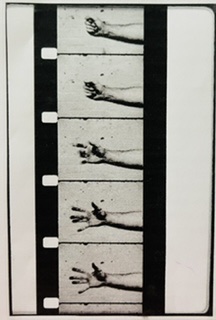Exercise 5.4. Does institutional critique presuppose an ‘insider’ audience requiring familiarity with artworks topics and issues or can it be understood by almost anyone spending an hour or two in a gallery?
As we read about the origins of Institutional Critique as an art genre, we understand that it emerged within a professional environment, such as artists reacting to institutions that bought and exhibited their work. These institutions – galleries, museums, private collections, started to be challenged by various artists aesthetically, politically, and theoretically since the late 1970s. Nicola Price explains in her tutorial about Institutional Critique. It is a relationship between artists and institutions, i.e., a relationship within a professional circle and between professionals, that presumes all agents have professional backgrounds and status quo. Another factor, which increases the importance of professional qualifications to enter this relationship, a dialogue, is the artist’s desire to reflect on, challenge, and discuss how their art is ‘presented, described, and sold.’ One of the mainstream movements in Institutional Critique has been artists’ rebellion again the art system as an establishment, which decides what object is the work of art and what is not, ending in refusal to display the latter to the public within professional premises.
Regarding the question in the exercise, I can say that I have problems with its clarity and objective. I don’t understand what we are asked about.
Is it whether anyone can understand what object can be recognized as a work of art and consequently displayed at the gallery or museum, including the object of art of Institutional Critique. Or is it anyone without professional background can or can not understand artists’ topics and ideas in the particular object of art as Institutional Critique? I prefer to answer both questions in the hope of managing my task in the exercise. According to the Institutional Theory of art, only a professional circle consisting of professional art critics, galleries, and museums can decide what art is and what is not. From this point of view, any professionally untrained and uneducated person ‘can not understand’ (as it is written in the exercise) an artwork. This statement, of course, can be heavily challenged by many and by artists first of all. However, we must recognize that professional education dramatically increases anyone’s ability in art expertise. But suppose we discuss whether a public can understand the artwork as some artist’s idea or appreciate the work of art as of an Institutional Critique. In that case, I can say this is a case, which doesn’t require any professional background. Otherwise, who would visit any art gallery or museum? Also, since Institutional Critique art objects often target different social issues, including political and economic, we can say that no professional background in art is required to understand and appreciate art as an Institutional Critique, because public can me very much aware of those political, economical or social issues and have a lot of expertise.
Medium Specificity.
Exercise 5.5 Watch Richard Serra’s films Hand catching Lead and Boomerang. Familiarize yourself with his work and say why you think he made these films.
Richard Serra, Hand catching Lead, 1968, @Bridgeman Images, image via OCA course workbook;

To answer the question in the exercise, I researched Richard Serra and his short film ‘Hand catching the Lead’, which he made in 1968. I watched his hour-long interviews on Youtube and found out he has been an artist who has been very much dedicated to rethinking sculpture and experimenting with different mediums. He started as a painter, saying he has been drawing since the age of four and got impressively well with it by his secondary grade at age seven. He was fascinated by medium specificity, especially steel and lead, which he experimented with to create monumental spatial objects, creating new space for a viewer as he/she entered the sculpture. In his interview with Charlie Ross (Youtube, 2001), Serra shared his childhood experience when his father took him to his shipyard to watch the new ship launch. He said that was a transformational experience for him as he was deeply impressed by how a skyscraper size giant becomes ‘light and floats.’ That was a moment when he understood that the material has so much potential. This childhood impression defined his artistic experiments with steel and lead. He has been asked whether the film is a continuation of his sculpture. He clearly answered: ‘ I did not extend sculptural problems into film or video. I began to make sculptures, film, and video at about the same time, so it cant be a question of developing one form into the other. My involvement with different media is based on recognition of the different material capacities, and it is nonsense to think that film or video can be sculptural’. ( Gagosian Quaterly, Fall 2019 issue). Serra recognized a ‘great freedom’ of film as a medium and was inspired by the works of other artists like Warhol and Yvonne Rainer. There is a version of why the ‘Hand Catching Lead’ film was created: he was asked to document the making of his sculpture ‘House of Cards,’ and he decided that a traditional documentary approach will not be able to ‘capture the creative process (Light Cone Experimental Film).
As we watch the film, we see the hand, which endlessly catches or misses the lead pieces. It reminds me of a play with a ball when we catch it and get very engaged with this action, which is a play. Every throw and every catch is very new, new as life though it is short, and these throws and catches are always very different. In his interview with Charlie Ross (YouTube, 2001), he explained his idea about what art is and how it has to be created. He insisted that before coming to any final creative idea and decision, an artist should play with a medium. He does this in his studio with shapes and models before deciding the direction he will finally take with a particular project. Probably, Richard Serra created this film to demonstrate this necessity and the process of playfulness in the creation of art. The catching hand is an experimenting hand. This repetitive gesture, which looks the same and every time, is profoundly different. The film was the best medium to demonstrate this idea.
Bibliography:
- ‘Institutional Critique, Art Term’, Editors of tate.org.uk, online on http://www.tate.org.uk, [accessed on August 3d, 2021];
- ‘1 Introduction to Institutional Critique’, by Nicola Price, Griffith University, Youtube, [accessed on August 3d, 2021];
- Institutional Theory of Art, Overview, editors of Oxford Reference, online on http://www.oxfordreference.com, [accessed on August 5th, 2021];
- ‘Richard Serra-Talk with Charlie Rose’, 2001, KunstSpectrum, Youtube, [accessed on August 10th, 2021];
- ‘Hand Catching Lead’, Richard Serra, 1968, @Bridgeman Images; Youtube, [accessed on August 10th, 2021];
- ‘Richard Serra Answers: Why make art?’, San Francisco Museum of Modern Art, 22 November, 2011, Youtube [accessed on August 10th, 2021];
- ‘Hand Catching Lead’, Editors of Light Cone Experimental Film, online on http://www.lightcone.org, [accessed on August 9, 2021];
- ‘The Art of Perception: Richard Serra’s films’, Carlos Valladares, Gagosian Quaterly, Fall 2019 issue, online on http://www.gagosian.com, [accessed on August 9, 2021];
